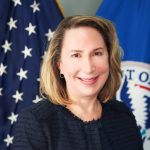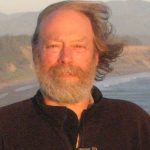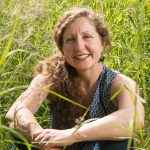
Helping forests prepare for a changing climate
From 2006 to 2020 our Forest Legacies Initiative provided policy makers and land managers with the latest scientific information and management guidance to sustain temperate forests during a time of unprecedented forest degradation and climate chaos.

Forest degradation and deforestation contribute more greenhouse gas pollution globally than the entire transportation network.
Conversely, protecting and responsibly managing forests for their capacity to store carbon for long periods (centuries) along with their associated biodiversity and clean water is pivotal to stemming serious global warming problems. Thus, Forest Legacies sought to elevate the importance of intact forests and watersheds in the Pacific Northwest and southeast Alaska nationally and globally in climate change and land-use policies.
Learn more about our Forest Legacies programs:
In 2016 we began to work more on issues that connected climate change with public health risks.
Defending Bedrock Environmental Laws and Policies
Fire is a natural force that has shaped the biodiversity of dry forests across the West for millennia. Fire is only catastrophic when it destroys homes or results in loss of life. Unfortunately, fire has been used as an excuse for opening up millions of acres of public lands to unabated logging based on the false premise that logging can prevent future fires and is needed to “restore” forests that have burned. We focused on fire as a keystone ecological process because there is much public concern about whether it will increase during a warming climate and whether it is a significant source of CO2 emissions.
For over a decade, Geos Institute served a leadership role in bringing cutting-edge science on the ecological importance of fire featured in top-tier science journals, news media reports, and in efforts by partners to defend landmark environmental laws and policies. We worked to develop scientifically sound alternatives that advocate for let-burn policies under safe conditions in the backcountry and fuels reduction near homes and in flammable tree plantations.
Over the years our Forest Legacies program was featured in many news articles and media outlets. We also produced some materials about climate change and land management generally. You can find a listing of these items here.
Protecting 220,000 Acres in the world-class Klamath-Siskiyou Ecoregion
For over a decade, Geos Institute played a lead science role documenting the world-class biodiversity of this 10-million acre region in southwest Oregon, northern California. Our science publications recognized it as a critical climate refuge for rare plants and wildlife to weather the coming climate change storm, if protected from unsustainable land use.
The biodiversity hotspot within the larger Klamath-Siskiyou ecoregion is the ~quarter-million acre south Kalmiopsis area that borders northern California’s Smith River National Recreation Area and contains the highest concentration of rare plants of any of Oregon’s 1400 watersheds. Pristine headwaters support Oregon’s best remaining salmon runs and highest water quality. Just to the west, lie Oregon’s only ancient redwoods. Unfortunately, industrial scale nickel mining operations have been proposed in the area. If developed these operations would degrade the headwaters of the North Fork of the Smith River, which flows into the popular Smith River National Recreation Area, the headwaters of the Illinois River, which is a salmon stronghold, and important salmon spawning areas along Oregon’s coast.
Geos Institute was a central participant in a campaign to secure permanent protection for the Kalmiopsis area for the past two years. Our partners, Oregon Wild, American Rivers, KS Wild, and other local organizations, brought their organizing experience and leveraged our scientific expertise in a multiyear campaign to meet our shared conservation goals to permanently protect this biodiversity hotspot.
Protecting ~1 Million Acres At-Risk in the Pacific Northwest
For decades, the Pacific Northwest has been ground zero for battles over logging old-growth forests that reached a zenith with the federal listing of the Northern Spotted Owl as “threatened” in 1990.
Protections afforded by the Endangered Species Act and other laws and regulations ushered in game-changing forest management policies and the birth of the landmark Northwest Forest Plan that lowered logging levels by 80 percent on ~25 million acres of federal lands from Washington’s Olympic Peninsula to California’s Coast Redwoods. In 2014, Geos Institute celebrated the twenty-year anniversary of the plan hailing it as a global model for ecosystem management and biodiversity conservation. But the plan would have collapsed in the Bush-administration years if not for efforts by Geos Institute and our partners.
In 2008, we were part of a team of scientists that exposed political interference in the Endangered Species Act uncovered during our participation on the U.S. Fish & Wildlife Service’s spotted owl recovery team. Our work was featured in breaking news stories from CNN to the Jim Lehr News Hour. When President Obama took office in 2008, he overturned the Bush administration’s efforts to rollback old-growth forest protections, citing political interference and scientific integrity issues that we worked to expose. And while old-growth logging on federal lands in the region is now at historical lows, the threats to overturn the plan are ongoing.
The Forest Legacies initiative utilized a network of over 1,000 distinguished scientists to engage with and speak out on policies affecting biodiversity, forests, and the climate change crisis. A total of ## sign-on letters were issued.
There are three types of rainforests: tropical, temperate, and boreal.
Tropical rainforests are warm and very wet places found near the equator that receive some 60 to 160 inches rainfall evenly distributed throughout the year. In contrast, temperate and boreal rainforests are found at high latitudes (northern and southern hemispheres), generally near coastlines, and in very wet (40 to 100 inches or more) and cool (average annual temperature of 43- 52̊ F) places that receive up to a quarter of their annual rainfall in the summer, a time when other forest types are experiencing summer droughts.
Boreal rainforests are found in northern latitudes and are at the cool end of the temperature spectrum, even cooler than temperate climates. While most of the world’s boreal forests are in dry climates, a small subset with coastal influences are wet enough to qualify as rainforests. Ecologists also have recognized them as rainforests, but the general public is unaware of this distinction or its importance.
Preserving Old Growth Forests while Supporting Livelihoods in the Tongass Rainforest
Recognizing the importance of Tongass old-growth rainforests in sequestering the equivalent of over 8% of the nation’s annual emissions, the US Secretary of Agriculture issued a directive to the Forest Service in 2013 to transition away from old-growth logging and into ‘suitable’ young- growth acres that can support the timber industry in perpetuity. Suitable young-growth acres are those considered to be accessible by currently open Forest Service roads (no road building required) and have relatively low ecological values due to non-regulated pulp and paper harvest regimes that occurred decades ago.
With the best information on hand at the time, the directive from the Secretary assumed that it would take at least 16-years of continued old-growth logging to achieve a transition. Our team spearheaded innovative research to greatly accelerate the transition to young-growth logging in the next half decade. We focused on defining a pathway to move from a ‘wall of litigation” resulting from continued old-growth logging to a “wall of wood” through suitable young-growth acres available to support industry.
In 2015, we conducted the most intensive in-field timber inventory ever on the Tongass. This resulted in identifying a young-growth transition that could regrow an ecologically and socially responsible forest-products industry in a half decade while protecting millions of acres of at-risk old-growth forests. A year later, we took the lead in helping the Forest Service to secure Congressional funding to inventory over 25,000 acres of suitable young-growth forests that built on our initial results.
Stay Updated!
Sign up to stay updated on our current initiatives and receive information you can use to build resilience in your community.

 Samantha Medlock is President of Climate Risk Advisors, helping communities and organizations advance equity, sustainability, and resilience. Her career began chasing floods as a local official in Texas Flash Flood Alley—a hands-on experience that still shapes her approach to climate and disaster risk management.
Samantha Medlock is President of Climate Risk Advisors, helping communities and organizations advance equity, sustainability, and resilience. Her career began chasing floods as a local official in Texas Flash Flood Alley—a hands-on experience that still shapes her approach to climate and disaster risk management.
 Arsum is the Senior Adaptation and Coastal Resilience Specialist for the National Wildlife Federation’s Southcentral Region. In this role, she advances climate adaptation efforts, with a focus on nature-based approaches to address the impacts of climate change and extreme events across the Gulf region. She has authored and co-authored numerous publications on climate impact assessments and adaptation solutions. Additionally, she regularly participates in state-based coastal resilience and hazard mitigation planning across the Gulf, collaborating with regional and local stakeholders.
Arsum is the Senior Adaptation and Coastal Resilience Specialist for the National Wildlife Federation’s Southcentral Region. In this role, she advances climate adaptation efforts, with a focus on nature-based approaches to address the impacts of climate change and extreme events across the Gulf region. She has authored and co-authored numerous publications on climate impact assessments and adaptation solutions. Additionally, she regularly participates in state-based coastal resilience and hazard mitigation planning across the Gulf, collaborating with regional and local stakeholders. Frank is the former President of the Reinsurance Association of America. Frank currently serves on the Advisory Board of the OECD’s International Network for the Financial Management of Large-Scale Disasters, the RAND Center on Catastrophic Risk Management and Compensation, and the University of Cincinnati’s Carl H. Lindner III Center for Insurance and Risk Management Advisory Board.
Frank is the former President of the Reinsurance Association of America. Frank currently serves on the Advisory Board of the OECD’s International Network for the Financial Management of Large-Scale Disasters, the RAND Center on Catastrophic Risk Management and Compensation, and the University of Cincinnati’s Carl H. Lindner III Center for Insurance and Risk Management Advisory Board. Jim is a multilingual world traveler. Based in Bavaria during the 1970s, Jim spent most of this period in India, Afghanistan and Nepal, where he founded and operated a charitable medical clinic serving Tibetan Refugees. He settled in Oregon in 1983 on a forested ranch in the Umpqua National Forest.
Jim is a multilingual world traveler. Based in Bavaria during the 1970s, Jim spent most of this period in India, Afghanistan and Nepal, where he founded and operated a charitable medical clinic serving Tibetan Refugees. He settled in Oregon in 1983 on a forested ranch in the Umpqua National Forest. Dr. Micah Hahn is an Associate Professor of Environmental Health in the Institute for Circumpolar Health Studies at the University of Alaska-Anchorage. She received her joint PhD in Epidemiology / Environment and Resources from the University of Wisconsin-Madison and her MPH in Global Environmental Health from Emory University. Subsequently, she was a postdoctoral fellow for the CDC Climate and Health Program, and in this position worked collaboratively with the CDC Division of Vector-borne Diseases and the National Center for Atmospheric Research. Her research focuses on understanding the health impacts of climate change and working with communities to develop locally-relevant adaptation and resilience-building strategies. Dr. Hahn is also on the Management Team of the Alaska Climate Adaptation Science Center.
Dr. Micah Hahn is an Associate Professor of Environmental Health in the Institute for Circumpolar Health Studies at the University of Alaska-Anchorage. She received her joint PhD in Epidemiology / Environment and Resources from the University of Wisconsin-Madison and her MPH in Global Environmental Health from Emory University. Subsequently, she was a postdoctoral fellow for the CDC Climate and Health Program, and in this position worked collaboratively with the CDC Division of Vector-borne Diseases and the National Center for Atmospheric Research. Her research focuses on understanding the health impacts of climate change and working with communities to develop locally-relevant adaptation and resilience-building strategies. Dr. Hahn is also on the Management Team of the Alaska Climate Adaptation Science Center. Michael is a former Founding Principal of Resilient Cities Catalyst, a global non-profit helping cities and their partners tackle their toughest challenges. He is currently the Executive Director of Climate Resilience Academy at the University of Miami.
Michael is a former Founding Principal of Resilient Cities Catalyst, a global non-profit helping cities and their partners tackle their toughest challenges. He is currently the Executive Director of Climate Resilience Academy at the University of Miami. Dr. Quintus Jett is a consultant, educator, and strategist for public causes. He has a doctorate in Organizations & Management from Stanford University, and a two-decade faculty career which spans schools, departments, and programs of business, engineering, liberal studies, divinity, and public and nonprofit management. Following Hurricane Katrina in 2005, Dr. Jett launched a volunteer project in New Orleans, which enlisted residents, students from over a dozen colleges and universities, and hundreds of others to field map the city’s Gentilly district, Lower Ninth Ward, and New Orleans East. Dr. Jett is an innovator in higher education, bridging the divide between academic research and the other priorities of the modern university, including student access and diversity, community engagement, and providing foundations for life-long learning in today’s rapidly changing world.
Dr. Quintus Jett is a consultant, educator, and strategist for public causes. He has a doctorate in Organizations & Management from Stanford University, and a two-decade faculty career which spans schools, departments, and programs of business, engineering, liberal studies, divinity, and public and nonprofit management. Following Hurricane Katrina in 2005, Dr. Jett launched a volunteer project in New Orleans, which enlisted residents, students from over a dozen colleges and universities, and hundreds of others to field map the city’s Gentilly district, Lower Ninth Ward, and New Orleans East. Dr. Jett is an innovator in higher education, bridging the divide between academic research and the other priorities of the modern university, including student access and diversity, community engagement, and providing foundations for life-long learning in today’s rapidly changing world. Scott is Monfort Professor of Atmospheric Science at Colorado State University. He has written about 100 publications in the peer-reviewed climate literature, is a former editor of the Journal of Climate, and served for five years as founding Science Chair of the North American Carbon Program.
Scott is Monfort Professor of Atmospheric Science at Colorado State University. He has written about 100 publications in the peer-reviewed climate literature, is a former editor of the Journal of Climate, and served for five years as founding Science Chair of the North American Carbon Program. Linda has many years of experience in disaster preparedness and resilience. She has been an elected official on the Linn County Iowa Board of Supervisors, Chair of the Metropolitan Planning Organization, the East Central Iowa Council of Governments, the statewide Mental Health Developmental Disability and the Linn County Board of Health. Langston is a former president of the National Association of Counties (2013-2014).
Linda has many years of experience in disaster preparedness and resilience. She has been an elected official on the Linn County Iowa Board of Supervisors, Chair of the Metropolitan Planning Organization, the East Central Iowa Council of Governments, the statewide Mental Health Developmental Disability and the Linn County Board of Health. Langston is a former president of the National Association of Counties (2013-2014). Ken works with families and organizations as a mediator, organizational consultant, trainer and facilitator. Along with his passion for helping people prepare for and reduce climate change, Ken also volunteers as a mediator through Mediation Works and is passionate about supporting youth through mentoring with Boys to Men of Southern Oregon.
Ken works with families and organizations as a mediator, organizational consultant, trainer and facilitator. Along with his passion for helping people prepare for and reduce climate change, Ken also volunteers as a mediator through Mediation Works and is passionate about supporting youth through mentoring with Boys to Men of Southern Oregon. Matthew is a retired high school teacher who was once honored as Oregon High School Social Studies Teacher of the Year. Before his teaching career he was in the restaurant business in Portland. He is also a lawyer who has been a member of the Oregon State Bar Association since 1980.
Matthew is a retired high school teacher who was once honored as Oregon High School Social Studies Teacher of the Year. Before his teaching career he was in the restaurant business in Portland. He is also a lawyer who has been a member of the Oregon State Bar Association since 1980. Andrea is the Resilience Policy Advisor for the North Carolina Office of Recovery and Resiliency. She works across state agencies and with local governments to increase the state’s resilience to the impacts of climate change.
Andrea is the Resilience Policy Advisor for the North Carolina Office of Recovery and Resiliency. She works across state agencies and with local governments to increase the state’s resilience to the impacts of climate change.